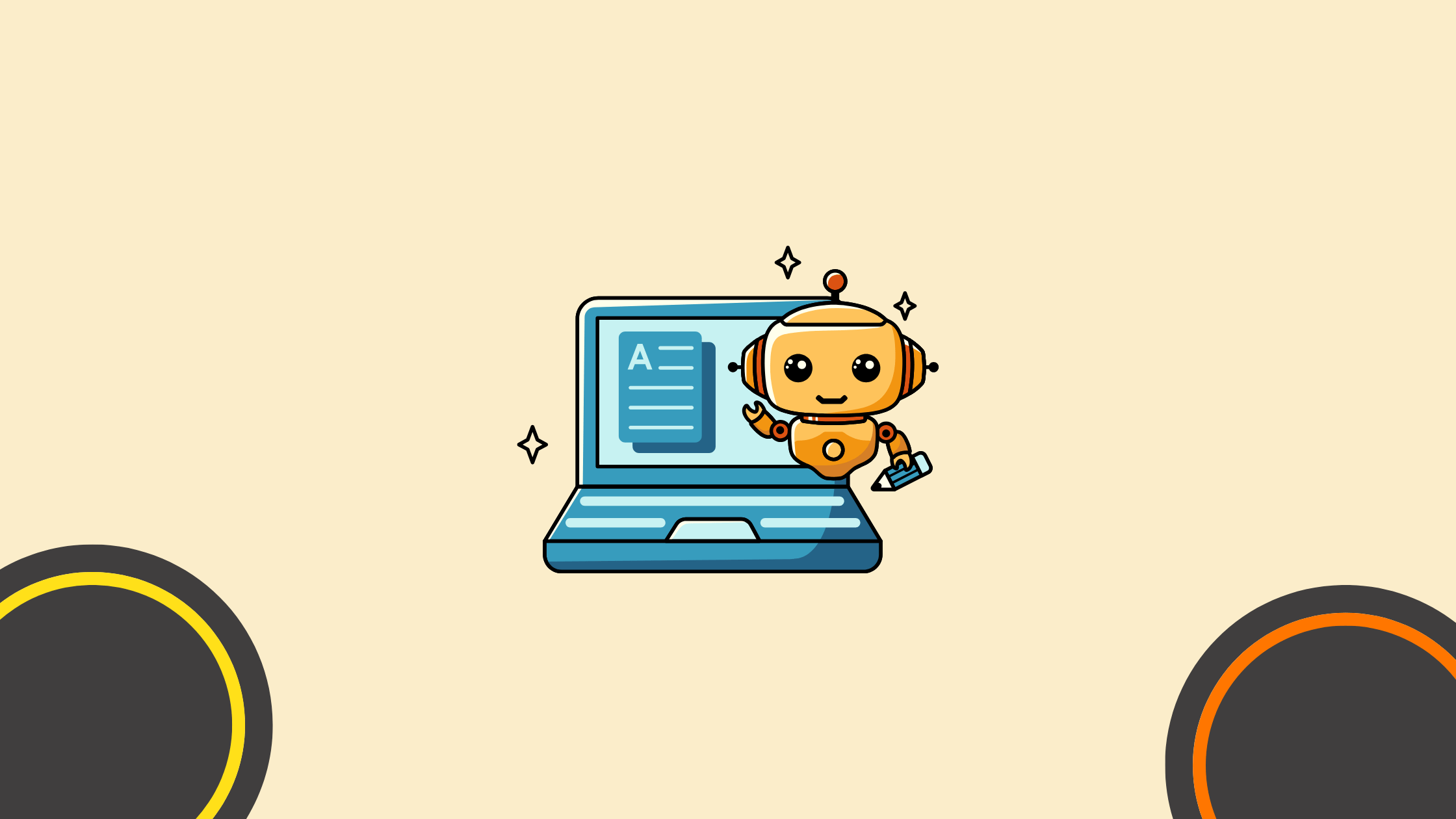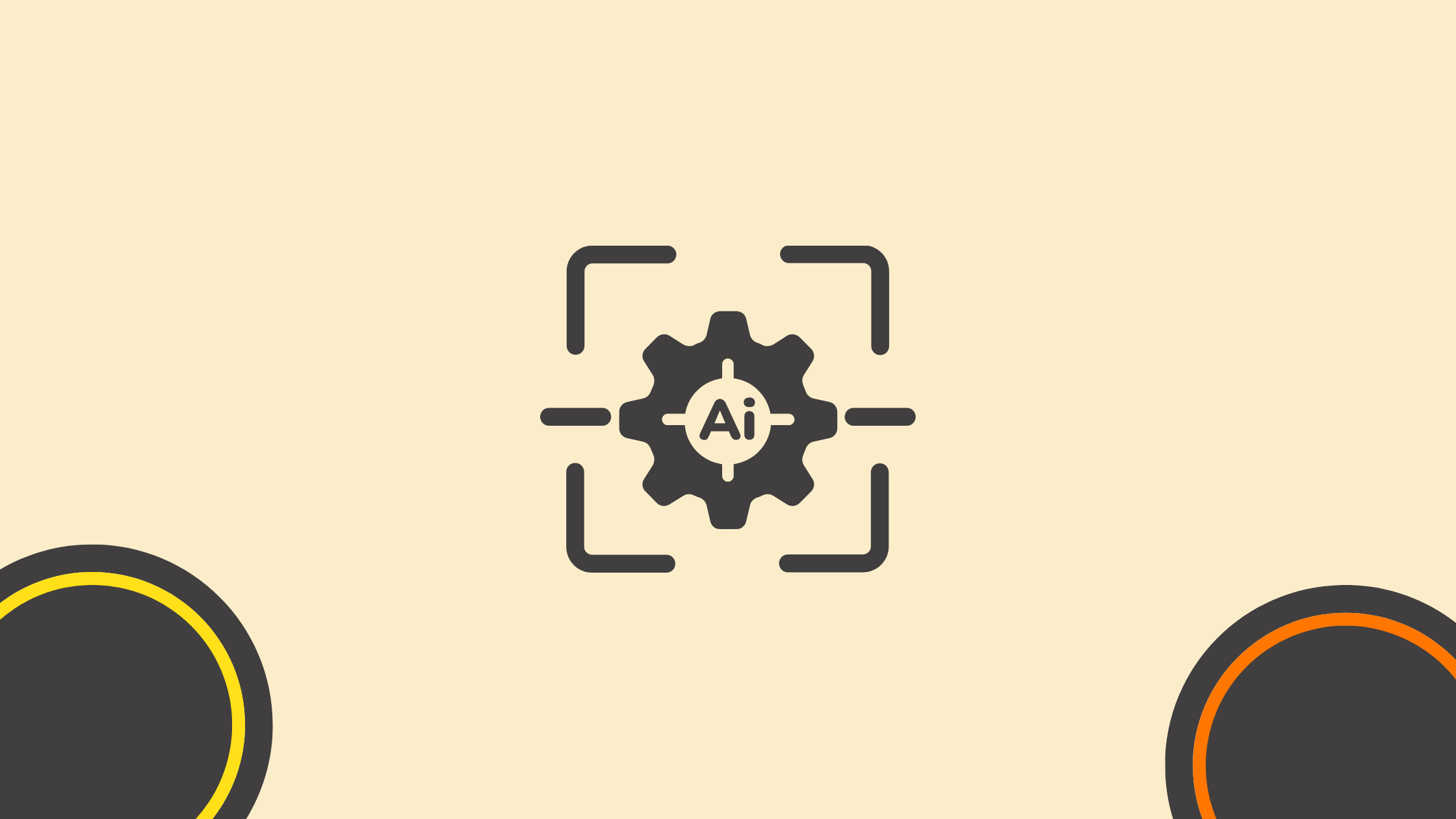How to check if writing is AI-generated

The modern world is full of tools that can make our lives easier. There is hardly a sphere where you can’t use a tech helper to solve an issue. Well, even writers today have access to AI writing tools that can help them craft strong content without too much effort.
In this article, we will take a closer look at how these AI writing apps work, what features they offer, and what you have to pay attention to when working with them, especially if you plan to use the created content on various platforms or if you are working on an academic piece.
Chapters
Human writing vs. AI text creation

Today, if one needs assistance with writing, be it a college student or a content writer, everyone can find an AI tool that will meet their personal needs. One of the options is a professional content writer who can craft a customized paper for you. If you are pressed for budget, this option can be pretty costly for you. In case you decide to work with a human writer, we highly recommend seeking, at least, a relatively cheap paper writer but not the one with the lowest rate because the consequences can be too rigorous. Another option is an AI writing tool that will cost you less but still provide you with fast and quality assistance.
| Aspect | Human Writing | AI-Generated Tex |
| Originality | Shows genuine creativity, unique phrasing, and the ability to generate new ideas. | Relies on existing data, often producing repetitive language and predictable content. |
| Structure and Flow | Utilizes various sentence structures, natural transitions, and an intuitive flow. | May include odd sentences, inconsistencies, and awkward phrasing due to machine learning limitations. |
| Depth | Demonstrates deeper understanding, critical thinking, and personal insights. | Can summarize data but often lacks nuanced reasoning or true human brain comprehension. |
| Personal Opinions | Reflects personal experiences, emotions, and subjective viewpoints. | Struggles to express emotions naturally and avoids strong personal opinions. |
| Context Awareness | Can adjust tone, style, and language depending on the audience and purpose. | May misinterpret context, leading to incorrect information or misaligned tone. |
| Language | Chooses words creatively, avoiding unnecessary repetition | Frequently repeats certain words, phrases, or clichés due to its AI models’ training. |
| Reasoning | Applies logical arguments, problem-solving skills, and abstract thinking. | AI struggles with deep reasoning, often making logical errors or vague conclusions. |
| Plagiarism | Can create fully original content from scratch. | May unintentionally replicate parts of its training data, increasing plagiarism risks. |
| Accuracy | Can fact-check and verify details before presenting information. | May generate false information since it does not verify sources in real time. |
| AI Detection | Passes AI content detection tools without issues. | Can be flagged by an AI content detector if it follows AI models’ common patterns. |
The algorithms: How AI generators work
Artificial intelligence generators are educated machines that use large language models with deep learning and natural language processing to create a text upon a user’s request. These are like generative pre-trained transformers, which analyze vast amounts of information from books, articles, and online sources to learn writing style. So, you give a prompt, and the AI tool predicts the most likely sequence of words based on patterns it has learned and generates contextually relevant content for you.
However, AI relies on probabilities rather than true comprehension. Thus, you may face incorrect information, and repetitive language that lacks human reasoning. Today, AI continues to evolve; it can now spot AI-generated content as well as refine human-like text.
The issues you may face using AI generators

As long as AI writing tools are machines, there are some issues that you have to always keep in mind and fix because these can affect your contempt and lead to harmful consequences. Here are some of the widely spread problems that users may face utilizing AI generators. Take a look at the issues below and make sure that your text has no sign of them.
#1: Repetitive structures
Of course, you know that AI models rely on training data from existing sources, and this can lead to repetitive language of generic phrases. This can make content unengaging as well as reduce credibility, especially in academic or professional writing.
When you read a text generated by AI, certain words and sentence structures can be repeated many times. This can make the content seem unnatural. Well, such a robotic writing style often reduces readability and makes it easier for detectors to spot AI-generated text.
#2: Plagiarism
Some AI-generated content closely retells pre-existing material, leading to potential plagiarism. Plagiarized content can lead to academic penalties, legal issues, and damage to a writer’s professional integrity
#3: False information
An AI-generated text may contain incorrect information due to inaccuracies in large language models. Of course, if you share incorrect facts, this can damage your reputation and mislead readers. This issue can be the most harmful for fields like journalism, medicine, or legal writing.
#4: Complex reasoning
AI struggles to provide a deeper understanding of topics or provide personal opinions. An AI-generated text may lack insightful analysis, which can make the content a bit unsuitable for certain goals.
#5: Unnatural sentence structure
Oftentimes, mechanized content includes inconsistent sentences that do not sound like human writing. For readers, such text may be pretty confusing, and, as a result, this particular text may be considered as not credible.
#6: Tone and emotions
Unfortunately, all the AI tools available today struggle to replicate human emotions and tone variations. Thus, AI-written content may feel a bit detached or impersonal. As a result, in such texts, we are more likely to face poor storytelling or lose a customer’s engagement.
#7: Biased or unethical content
As long as AI is trained on human-generated datasets, it can unintentionally produce biased or discriminatory text. This is a true issue today because publishing biased AI content can harm your reputation, offend audiences, or even lead to misinformation.
#8: Academic integrity
Many AI detection tools can detect generated text and lead to concerns in academic writing. There were a lot of cases when students, researchers, and professionals faced credibility issues for AI-generated content. Today, colleges and universities have a restriction that they won’t accept AI text; they require students and researchers to provide reports to make sure that every piece is human-written content.
#9: SEO and penalties
Search engines like Google can detect AI-written content and prioritize human-written content in rankings. It means that if you share a generated post, you have to consider the fact that it can be banned or Google won’t show it on the first page even if it meets a user’s request. Today, websites heavily rely on AI writers, and this often leads to various penalties as well as reduced visibility and traffic.
AI checkers: The list of functions you can enjoy
Today, AI-detecting tools can not only show you the potentially AI-generated content but also provide you with a large number of other insights that can help you improve your content to perfection. Here are some of the beneficial features that most reputable AI-detecting tools offer to their users. When seeking a detector, also pay attention to these functions to get the most out of such AI assistance.
Plagiarism detection
Many AI content detection tools also check if you provide plagiarized text. If your detector offers such an option, you can make sure that your content is original and that your AI writer has copied information from existing sources. This is especially useful in the academic field, where authenticity and human-written content are essential.
Readability analysis
Some AI detector tools provide readability scores. With this feature, the tool can assess the readability of the content and tell you whether human writers or AI writers have produced the text. Aspects like sentence structure, sentence length, and complexity affect the readability score, and if there are any issues, the tool can suggest improvements to make your content more engaging and understandable for different audiences.
Grammar and style checking
AI detectors may include grammar and style suggestions to refine your text. Since AI text can sometimes contain unnatural phrasing, these tools help correct errors and improve the communication the ideas. Whether one has worked on a piece on their own or used AI tools, this feature can come in handy because it can help human writers polish their work.
Tone and sentiment analysis
Detecting tone is crucial for detecting AI-generated content. Many tools can analyze the text written and tell you if it sounds professional, friendly, or academic. This can not only spot AI-generated content that lacks emotional depth but also help you adjust it for a more natural feel.
Fact-checking
Since AI models sometimes generate false information, some detectors can check the facts presented in the content. They browse AI-generated claims with trusted sources and test the content’s accuracy. This is especially important for research, journalism, and academic writing, where factual integrity is crucial.
Writing improvement
Many content detection tools provide feedback on writing. This can help users enhance clarity, coherence, and originality. This is a great option if you use AI tools because it ensures that your content presents human writing standards, not too robotic AI output.
AI writing assistance
Some tools include AI writing assistants to refine your content and help come up with a human text by avoiding AI-generated patterns. With this feature, it is pretty easy to learn in practice how to structure arguments, maintain a strong flow, and use certain words to make your writing engaging.
Paraphrasing
If are wondering if it is possible to make AI-generated content sound more like human-written, the answer is definitely ‘yes!’. Today, there are a lot of humanizers that offer paraphrasing features. A detector can identify AI-written content and suggest how to reword it to come up with a more authentic tone while keeping the original meaning.
Keyword optimization for SEO
If you are creating content for search engines, some AI detectors can help you optimize it. The app can analyze the topic and search for certain words relevant to it. This is particularly useful for bloggers and marketers who need human-written texts that rank well while avoiding penalties for AI-generated content.
Multilingual AI content detection
Some reputable tools can even analyze content in multiple languages to help you detect AI writing across different linguistic structures. This feature is crucial if you are working on academic and business papers using AI helpers and need an AI detection tool to make sure it meets all the standards as well as omits potential issues.
How to choose the best AI detection tool

The very first step is to understand all your needs and what you want to do with the content you will get. Also, consider all the requirements you have for the text. When you are ready with the list of demands, you can start searching for the best tool that will help you meet all the defined needs. In this section, we have gathered some important tips that can help you find the best option for your needs and make sure the AI-detecting tool is reliable and accurate.
1. Accuracy of AI generation
Of course, the first step is to make 100% sure that the tool is accurate. It is a must that an AI content detector provides high accuracy when identifying AI-generated text. Without high accuracy, you can’t fully rely on a helper because false positives or negatives can lead to incorrect conclusions. This issue is especially important in academic contexts, where original writing is one of the main requirements.
2. Various AI models
Seeking AI detectors, ensure they can identify AI-written content from different large language models. Today, AI writing tools learn rapidly, and it is crucial to find an AI detector that also consistently updates its data to be ready to catch the generated content writer by new AI models.
3. Assessing the language
When searching for an AI writing detector, make sure the tool you want to use can distinguish between AI-generated and human-generated content by analyzing language patterns. Well, human writing often includes personal opinions, complex thought processes, and unpredictable phrasing, but AI struggles with machinery working that is often a bit complicated and non-creative. This is one of the most important features that can help you understand how to tell if writing is AI-generated.
4. The false positive rate
You can test several tools and see which AI content detection tools offer fewer false positives; many earlier detectors often mistakenly present human-written content as AI-generated. These AI tools struggle with detecting human writers because their content may contain specific words commonly found in AI text.
5. Learning capabilities to detect AI content
Modern AI detectors utilize deep learning and machine learning to analyze text generated by AI writing tools. Looking for reliable content detection tools, should constantly update their services and knowledge to recognize an AI-written text.
6. Natural language processing
Ensure your AI content detector incorporates natural language processing for better AI content detection. It means that the tool has to consider not only the words but also the context, tone, and style. Well, if you see that an AI struggles with nuanced language, it is highly recommended to seek a tool with strong NLP capabilities that is quite smart to spot AI-generated text more effectively and can detect AI writing with a deeper understanding.
7. Free version
The number of tools is enormous today, and in order to hook users, most detectors have free options for testing. In this case, you can utilize an AI content detector, its free version with free features, and test its effectiveness before ordering a paid plan. Of course, free trials offer limited access, but in most cases, it still provides enough AI detection features to evaluate how well they can identify AI-generated content.
8. Confidence
Another aspect we highly recommend to pay attention to is a privacy guarantee. A reputable and secure AI writing detector will allow you to confidently present information. Moreover, all your checks and AI output should be private and secure. If the tool shares everything you provide publicly, this can be a pretty troublesome experience, especially if you work with articles in academic and professional environments.
The limitations free versions may have
Well, the number of tools is enormous today, and merely each detector offers a free edition so a user can try the functions it offers. Of course, free variants often have limited services, but in most cases, they are pretty enough to see if the tool provides accurate results and meets your needs. So, here are some limitations you may face working with free options and how to handle them effectively.
- Limited word count
Free versions often restrict the number of words that can be analyzed in one go. You can break your text into smaller sections or use multiple tools to analyze longer documents.
- Learning analysis
Free versions might not utilize deep learning or advanced natural language processing. As a result, this can reduce the ability to detect AI writing. We recommend using a mix of AI content detectors and human review to be 100% sure about the complete accuracy of the results.
- Advanced features to detect AI-generated text
Free versions of detectors can restrict access to newer language models and as a result, the results may be less effective. If possible, use trials of premium tools or you can also compare results across multiple detectors.
- Restrictions on repeated use of artificial intelligence
Well, if you use free versions of AI detection tools, you should be ready for some limits; these can be daily or weekly limits for checks. Thus, if you need to check a lot of texts and you do not want to pay for a subscription, you should have several tools at your disposal in order to always have an available checker when needed.
- Poor reports
Free tools may only give basic detection results without any in-depth analysis and suggestions. Of course, you can use multiple content detection tools for additional insights.
- No training data insights
Many free tools disclose the training data used in detection pretty rarely, and this issue makes their reliability questionable for users.
- No customization
Free versions, compared to paid ones, may lack options to filter the content types. Well, free tools use general algorithms, and you may not be able to check your writing for various contexts.
- Hybrid texts
If the text contains both human-written and AI content, free tools may misinterpret sections because they may lack some knowledge for deeper analysis.
- Historical data
Most free tools do not save previous scans you complete, and as a result, it can be pretty hard to compare texts over time.
- Advanced algorithms
Of course, premium AI detector tools, compared to free options, use better content detection algorithms. If you use a free edition, you should always keep in mind that it may use outdated models.
- No multi-language support
Some free AI detection tools only work for English, and this is a pretty challenging limitation that neglects multilingual users.
Now you know how to use AI writing helpers and omit all the possible issues that you may face using their assistance. Grab these ideas on how to polish your writing, find a reputable AI checker, and enjoy the results!
Other Interesting Articles
- AI LinkedIn Post Generator
- Gardening YouTube Video Idea Examples
- AI Agents for Gardening Companies
- Top AI Art Styles
- Pest Control YouTube Video Idea Examples
- Automotive Social Media Content Ideas
- AI Agent for Plumbing Business
- Plumber YouTube Video Idea Examples
- AI Agents for Pest Control Companies
- Electrician YouTube Video Idea Examples
- AI Agent for Electricians
- How Pest Control Companies Can Get More Leads
- AI Google Ads for Home Services
Master the Art of Video Marketing
AI-Powered Tools to Ideate, Optimize, and Amplify!
- Spark Creativity: Unleash the most effective video ideas, scripts, and engaging hooks with our AI Generators.
- Optimize Instantly: Elevate your YouTube presence by optimizing video Titles, Descriptions, and Tags in seconds.
- Amplify Your Reach: Effortlessly craft social media, email, and ad copy to maximize your video’s impact.